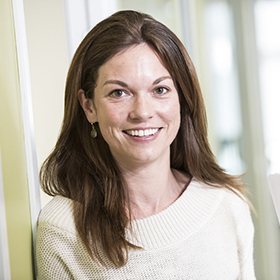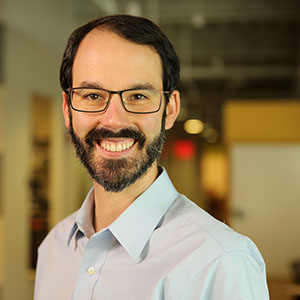In the best of times, even the most well-known nonprofits live close to the edge. Among the 300 grantees receiving the most funding from the 15 largest US foundations, more than half suffer from frequent or chronic budget deficits, and over 40 percent have fewer than three months of reserves in the bank to cushion financial shortfalls. Of course, these are not the best of times.
In the first weeks of the coronavirus pandemic, US donors and the vitally important nonprofits and NGOs they fund are thinking about how to cope with the challenges of the moment and the uncertainties of the weeks and months ahead. In some respects, the best advice we can give to funders is the philanthropic equivalent of “wash your hands”—an example of something we all know, but have to focus on and get right amid the confusion around us.
In talking with both donors and nonprofits and reading the good advice of many leading thinkers in the space over the last few weeks, here are what have emerged as three important things donors can do right now to support grantees.
Recommit and reassure
With the falling stock market, we’ve heard from many nonprofit leaders who are worried about grant awards that their funders had already made or were in process of making. “Foundations, now is a good time to reassure grantees that you got our backs,” writes Seattle-based nonprofit leader Vu Le, in Nonprofit AF.
Providing reassurance is something donors can do right now—and many are: reaffirming that they will honor commitments, and that they are engaged and ready to respond. Given memories of the Great Recession, and the longer-term challenges that may be in store, funders may want to go even further and double down on their grantees—not simply reaffirming funding for the current cycle, but committing today for the next one.
Provide flexible support
We know a public health organization in New England that was relieved to have a couple of local funders call up unexpectedly the other day and say—what do you need? The funders helpfully made a few suggestions and shared ideas for what they might be willing to fund. This is encouraging. But, like almost all of us right now, the nonprofit can’t be sure what it will need as the pandemic and its after effects unfold. It can make a list now, but that list might be obsolete next week or next month.
In the wake of the coronavirus (COVID-19) crisis, the Council on Foundations, Ford Foundation, and 40-plus other philanthropic organizations make the call for more flexible funding.
Read more >>
For many nonprofits, the most important need will be flexible funding. And that’s what some donors are doing—getting on the phone with their most trusted grantees and saying: We’ll fund you in responding to this crisis, and we don’t have to know in advance exactly how you’re going to spend our money. We trust your expertise; we trust you. Some of this pertains to funding already awarded: loosening restrictions on existing grants; delaying reporting requirements and reducing other administrative burdens so that that paperwork doesn’t get in the way of action. And some of it is about new commitments: helping a key organization weather an immediate cash crisis; backing new crisis-response programming.
Focus on the most vulnerable communities and those that serve them
While COVID-19 does not discriminate by race or income, we know the effects of the virus and the countermeasures against it—like closing schools and early childhood programs, or shutting down restaurants that employ so many low-wage workers—will hit the most vulnerable communities the hardest. As Lauren A. Smith, co-CEO of FSG and previously Medical Director of the Massachusetts Department of Public Health, noted in a recent post, “any natural disaster or public health emergency always takes an increased toll on those groups who were marginalized or excluded before the emergency." In a recent newsletter, the racial justice organization Race Forward further reminds us all that: “In this moment, explicitly naming race as a factor that informs how we assess ‘Who is most vulnerable? Who is burdened? Who benefits?’ will ensure that emergency response practices and policies proactively integrate racial equity into local government responses to COVID-19.”
The same is true among nonprofits. Those led by people of color often live especially close to the financial edge, and these organizations are critical in responding to the shockwaves of the pandemic. Recent (not yet published) data collected and analyzed by Bridgespan and Echoing Green found, for example, that a sample of Black-led organizations had significantly lower revenues and much fewer unrestricted net assets than their white-led counterparts.
“There is a starting point of imbalance in funding streams and funding amounts going to people-of-color-led organizations,” said Shawn Dove, CEO of the Campaign for Black Male Achievement, in Bridgespan’s recent “Eight Steps for Managing Through Tough Times” article. “The feeling of scant dollars is very real. Forget ‘managing through tough times’—leaders of color are often already operating in tough times.” As we have said, donors will likely turn first to the organizations they know the best. But overcoming the effects of structural racism will also require an intentional shift from the kind of responses that many of us default to. As donors field requests from grantees, consider which leaders and organizations may not have the long-standing relationships with funders needed to directly request more flexibility. And actively reach out to the leaders of color in your grant portfolio to ensure equity in your support and response during this time of crisis.
Philanthropy can be rightfully criticized for its sometimes sluggish and bureaucratic responses to big social challenges, or for sometimes preferring what’s new to what’s most urgently needed. But in a crisis, philanthropy has shown it can respond fast and flexibly. In the spring of 2009, as the US economy seemed to be melting down and the ranks of jobless swelled, George Soros committed $50 million—and challenged other donors to come up with an equal amount—through a gift to the Robin Hood Foundation to meet the basic needs of New Yorkers for food and shelter. In the wake of 9/11 and Hurricane Katrina and the Ebola outbreaks in Africa—all occasions not only of disaster, but also of great uncertainty—there were donors who came forward with fast and flexible funding targeted to nonprofits and NGOs they trusted to put the money where it could do the most good. Already with the coronavirus pandemic, several city-based funds have sprung up to help with the emergency response.
As Antony Bugg-Levine of the Nonprofit Finance Fund recently wrote about the nonprofits that serve the most vulnerable among us, “Donors need to act now to ensure these organizations can not only help us through the crisis but also be in a position to rebuild our communities in the future.”
One of philanthropy’s greatest assets is its flexibility—the flexibility to boldly innovate solutions for tomorrow’s future, and to double down on deeply trusted relationships with nonprofits today. We at Bridgespan remain committed to navigating together through this public health crisis and the uncertainty beyond. We are eager to highlight examples from the field about what’s working that others can learn from. If you have an example or story to share, please let us know using the form below.
{^widget|(name)BizForm|(container)BridgespanForms|(defaultformlayout)Standard|(bizformname)Covid_response_philanthropy|(widget_displayname)On-line+form|(width)|(height)^}




